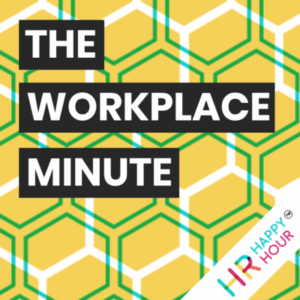The Coronavirus Pandemic and the Rapid Shifts in Labor Market Demand
March 24, 2020
As the Coronavirus Pandemic continues seemingly unabated in countries all over the world, the impacts on the US economy and the negative repercussions of widespread business and organizational disruption are coming more into focus. Entire industries, and the leading companies in those industries, have announced or certainly will soon announce significant workforce reductions or employee unpaid furloughs. These industries, hit the hardest and most directly by Coronavirus related policy changes, (international travel bans, closed borders, local or state level shelter-in-place rules, bans on meetings over as few as two persons), are devastating and potentially long lasting. Airlines, hotel chains, cruise lines, chain and local restaurants, casinos, gyms, event and conference centers, and many more have seen their business’ demand and revenue plunge by as much as 90% in just a matter of a few weeks. It seems to have happened in an instant. Just from personal experience, only three weeks ago I attended a really large business conference in Las Vegas, with thousands of attendees. Sure, the event organizers did consider a postponement, but eventually went ahead with the Conference, likely becoming one of the very last large scale events to take place in Las Vegas, at least for some time.
When the next set of official labor market reports get released by the Bureau of Labor Statistics, some experts estimate as many as 2 – 3 million American workers will register as newly unemployed, and the official unemployment rate might surge from 3.5% at the end of February, to over 10% (or more) at the end of March. Whatever the official number and rate is at the end of March, the amount and rapid, dramatic increase in just a few weeks will be incredible, and perhaps unprecedented. And the March figures will only represent one data point, one point in time, and unless the trajectory of the rate of increase in cases of Coronavirus suddenly, and unexpectedly declines, the April data will be even more grim. It is certainly likely to get worse, especially in terms of labor and employment, before the tide turns.
But meanwhile, even as if many of the above impacted industries are shedding jobs by the thousands, and even tens of thousands, the dynamics of the consumer market, and the changes in behaviors driven by many of the social isolation and shelter-in-place policies are suddenly, and also dramatically, increasing the demand for workers in other areas of the economy. Mass retailers, grocery stores, pharmacies, heck, even national pizza delivery chains are seeing rapid increases in demand for their products and services, and many have announced the plans/needs to rapidly increase their workforces. Just a few of the notable companies who have made such announcements include Walmart, seeking to hire 150,000 new employees; Amazon, 100,000; CVS Health, 50,000; Dollar General, 25,000; and even Papa John’s, which not too long ago seemed like the answer to a joke about awful pizza, is seeking an additional 20,000 workers. And finally, as more and more of us are relying on grocery delivery in a time of shelter-in-place, today Instacart, the on-demand grocery delivery service announced the need for as many as 300,000 “grocery shoppers” over the next three months.
While it is unlikely that the surge in demand for workers from the companies who have seen an increase in revenues due to the changes in the economy being driven by the pandemic is going to be large enough to offset the workforce separations from the adversely impacted industries and companies, it is at least somewhat encouraging that hopefully many thousands of displaced workers will be able to get back into employment relatively rapidly. How rapidly certainly depends on numerous factors – the geographic alignment of newly available workers with the new demand for workers, the ability of hiring firms to execute mass hiring events in an efficient manner, and of course the hard to predict developments and shifts in how the pandemic itself continues to effect the economy and the subsequent need for labor across industries. And then, finally, eventually, the economy and the labor market will have to re-balance labor supply and demand once the pandemic is past us and things return to more or less normal, or what we will likely call the new normal. It will definitely be a test of the macro labor market and its efficiency to see if it can bounce back from this extreme set of circumstances and help everyone who is struggling right now to get back on their feet and back to work if they have been disrupted by forces out of their control.
How we can help
Led by Trish Steed and Steve Boese, H3 HR Advisors harnesses over 40 years of experience to delivery HCM insights and guidance to global organizations.
H3 HR Advisory services
By leveraging technology, analytics, and our deep industry knowledge we can help you to reposition your workforce and ensure that you have the right people with the right capabilities in the right roles to positively impact the growth of your business.
HR Happy Hour Podcast Network
Created in 2009, The HR Happy Hour Show is hosted by Steve Boese and Trish Steed and is the longest continuously running internet radio show and podcast on Human Resources, HR Technology, Talent Practices, Workplace and Leadership topics.
H3 HR Speaking Services
We work closely with every client to customize your content - keynotes, webinars, research, infographics, and buyer’s guides - to inspire, educate and inform the audience enabling you to reset and realign your organization for a talent-led breakthrough.
Get in touch
Talk to us today and find out how we can help you and your organization leverage HCM technology to attract, onboard, retain and manage top talent.




